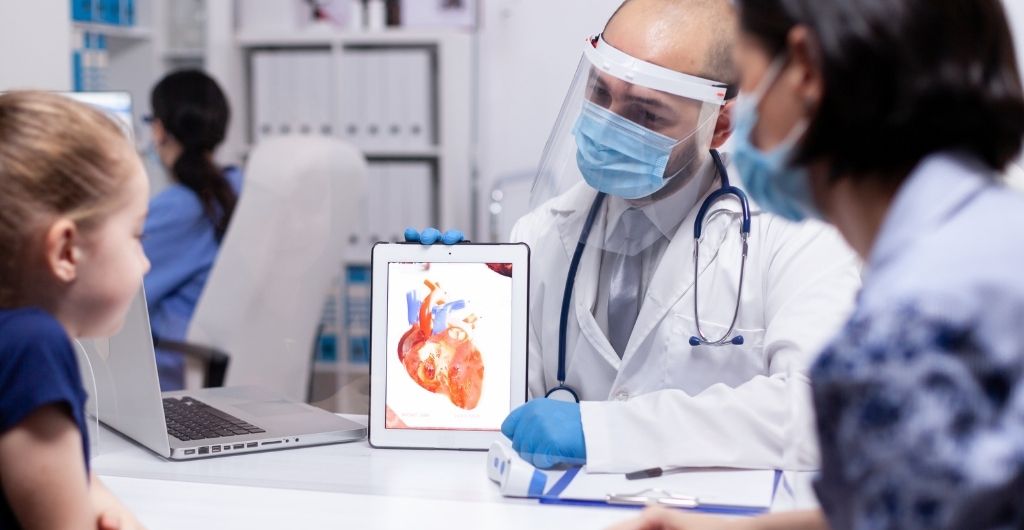
Simon Applebaum, Managing Director of Spirit Digital, explores how remote monitoring should play a crucial role in reengineering NHS pathways to help better manage vulnerable patients with long terms conditions and pave the way for new models of continuous, preventative care beyond COVID-19.
Everyone knows that the way the NHS manages long term condition (LTC) care is unsustainable. The need to establish new models, as laid out in NHS England’s House of Care Framework, is widely understood. Yet despite the rationale and the consensus, recent circumstances have shone a clear spotlight on how little progress was made in unlocking a solution at the local level since the framework was introduced in 2013.
The number of vulnerable people with LTCs and multimorbidity continues to grow, placing well documented pressure on services and pathways.
More than 15 million people in England have at least one LTC, while 20% of those live with three or more. The implications are significant. Prior to the outbreak of COVID-19, LTC patients accounted for 50% of all GP appointments, 70% of all bed days and around 70% of acute and primary care budgets in England. The Population Ageing and Care Simulation model projects that, by 2035, 2.5 million (17%) people over the age of 65 will have four or more chronic illnesses. Around two thirds of over 65s – a massive 9.7 million – will have at least two.
But the problem is not one for the future – with these individuals accounting for the most vulnerable patients, providing safer, more sustainable models of care is a national imperative, right now.
A primary problem: recognising deterioration
Fundamentally, the single biggest priority in the NHS is patient safety. Five years ago, in the wake of the Francis Report and the Berwick Review, a range of policies and measures were put in place to help clinicians recognise and respond to patient deterioration in acute settings.
However, these same policies had, until now, never been extended into the community. Yet the two-fold necessity to free up hospital beds to enable the NHS to cope with the demands of the coronavirus pandemic, combined with the need to prevent these vulnerable patients from deteriorating and requiring an emergency admission, firmly put the emphasis for better deterioration management on primary and community care. The scenario is particularly common in patients with multimorbidity. The system is not set up to support them.
The problems with historic approaches to multimorbidity are manifold. Primarily, chronic diseases are typically managed in isolation via services that are set up to focus on single conditions. Well-coordinated care is the exception not the rule, with pathways often fragmented and thwarted by a lack of informational connectivity.
Alongside this, LTC patients often receive limited support beyond the clinic. In the digital age, increased access to online information theoretically empowers patients to self-manage their conditions more effectively. But the approach has largely been a passive one that’s prone to risk, expecting patients to be able to take greater responsibility simply because the technology is there.
Wide variability in online health information, health literacy levels and the understanding of disease invariably leads to poor self-management and, at times, patient deterioration, itself manifesting in the need for urgent treatment. Many of these emergency admissions are entirely avoidable. However, since clinicians have no advance visibility of patient deterioration, they cannot proactively intervene. The conclusion is clear: pre-COVID pathways are routinely configured to deliver reactive and therefore expensive, models of care.
Regaining control through remote monitoring
The challenges of managing LTCs are familiar to every practice, community trust and acute hospital – many of whom have limited control over the flow of patients into their services. But familiar challenges can have familiar solutions.
Recent months have rapidly advanced the adoption of digital technology throughout the NHS, from online or remote triage and GP appointments, to patients taking up remote and digital services and e-prescription services.
Moreover, some trusts and CCGs have furthered the concept of the ‘virtual ward’, a model to support patients are cared for in the most appropriate setting – often after discharge from hospital or referral to primary care. Facilitated by digital, remote monitoring, delivered over intuitive tablet devices, this technology provides a powerful platform that enables clinicians and carers to undertake intensive monitoring, education and empowerment of at-risk patients, from the safety of their home.
Automated triage for healthcare teams flag when an escalation of care is required. These are triggered through regular vital signs monitoring and health question sets, tailored to specific (and where needed multiple) medical conditions – such as COPD; heart failure; cardiopulmonary rehabilitation, amongst others – linked to dynamic care plans. Crucially, this gives clinicians real-time visibility of physiological trends to help them recognise and respond to deterioration. Moreover, it provides them with an evidence-base that gifts them ‘remote control’ of vulnerable patients, allowing them to intervene proactively rather than wait for a costly, and unsafe, emergency admission.
These solutions are also custom-designed to help patients engage with their health and self-manage their conditions through the daily capture of physiological data and self-reported information about their wellbeing, reducing the risk of future exacerbations through better self-management.
Beyond COVID-19
During the pandemic, such models of care have helped community and GP teams manage increased caseloads remotely. They have helped the NHS to release hospital beds and keep vulnerable patients safer at home. They are also infinitely adaptable, with new functions and pathways being developed and added all the time – including, for example, a COVID-19 symptom checker.
However, when we enter the ‘new normal’, one thing is certain: no-one in the NHS wants to return to the old models of care. We have proven that we can provide safe care through new digital models – and we have proven that those models have an additional focus on personal, continuous and preventative care that we have hitherto not been able to achieve.
Conclusion
The principles of remote monitoring are strongly aligned with the key components for person-centred, co-ordinated care that the ‘House of Care’ model introduced over seven years ago. The framework highlighted the need for services that ‘engage and inform individuals and carers to self-manage’. It called for ‘organisational and clinical processes that structure around the needs of patients using the best evidence available’.
Moreover, House of Care underlined the importance of ‘informational continuity’: if HCPs are to provide the right care at the right time, they ultimately need access to the right information. This is undoubtedly true. And it’s undoubtedly true now more than ever before.
This is why remote monitoring solutions, which give clinicians unprecedented real-time visibility of their most at-risk patients, must play a key role in our future model of continuous, preventative care.
It’s time to give clinicians – and patients – the remote control.












